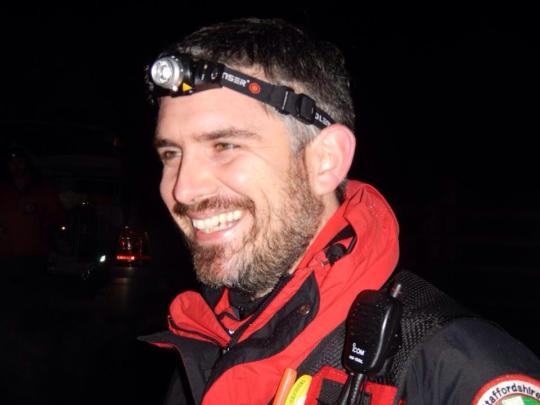Staffordshire's First Search and Rescue Dog Team - Part 1.
I'd not had much to do with Dave Barley up until that point, but we would soon become best friends, and I found him to be really knowledgeable. He was also the right amount of 'honest' and wasn't afraid of telling you when he thought you were "talking rubbish,” although he was a bit more flowery with the words he used. It was quite refreshing being around someone who wouldn't hold back on his views, and he often made a lot of sense. I found him to be a real professional, and he was one of the team’s hardest-working members.
We would often go walking our dogs together, and he would stop to tell me about the history of Cannock Chase, whilst asking me to navigate somewhere else. He had taken me under his wing and was training me all the skills I would need to become a team leader. In 2014, I went on a national Team Leaders course and gained my Team Leader qualification. This meant that I would be responsible for taking search technicians out on callouts and be responsible for how we searched our allocated areas. It was also a necessary requirement to come as a dog handler.
 |
| Dave and Red |
Dave owned a red and white Border Collie called Red, and I was besotted with him. I'd never met, and still haven't met, a more calm Collie. He was such a kind-natured collie, and he was a real solid dog. Dave had approached our National Association and informed them that he had been given the go-ahead to set up SSART's Dog Section. In turn (months later), they had responded to his e-mail, telling him to read a book. Less than a week later, having read the book, Dave and I stood on the Chase, scratching our heads. I'd volunteered to help Dave train Red by hiding from him.
Having thought we understood what the book’s instructions were implying, I ran away down a path and then dropped into a patch of bracken next to it. Moments later, Red was by my side and we were playing with his toy. We repeated this several times over a few visits to the Chase. Getting to play with Red was great fun and I loved it. It was, however, impossible to say whether the training was working, and with the Association of Lowland Rescue being lacking in response to Dave's queries, we would never know.
A few weeks later, out of the blue, Dave was contacted by a Mountain Rescue dog handler from Buxton MR Team. They had heard that we were trying to start our own dog section and we were invited to join them on a training day. The invitation led Dave and me to Biggin Dale in the Peak District on a Sunday morning. We were met by Nick Smith and after introductions, Dave and Red were put through their paces. During the session, I got to do some more hiding for Zak, a Merle Border Collie, and a very loud German Shepherd called Dolly, whose bark was deafening!
Dave and Red performed admirably during the session and, as I would regularly continue to experience, I had the best time watching the dogs work. I got to play toy focus games with Dolly, where I experienced her jumping up and barking at me for her toy. It was clear she was desperate to get her toy and everyone seemed pleased by this. At the time, however, I remember not being so sure that I enjoyed such a big dog barking millimetres from my face! I was also found by Zak and I remember being amazed at how quickly he found me.
After the session had concluded, we were invited back every other Sunday by Nick. We also experienced what would become almost obligatory mocking of the differences between Lowland Rescue and Mountain Rescue, with Nick suggesting our dogs would only need to be happy searching back gardens and ponds. Although this was said in jest and Dave and I took it all in good nature, it was meant, we would later learn that the views of other Mountain Rescue members reflected this misconception and in some cases in quite an aggressive tone. Nick would remain, however, one of our biggest advocates in pushing forward the idea that Staffordshire dogs could become members of the Search and Rescue Dog Association for England.
Regardless of how the future panned out, Staffordshire had begun training its first Search Dog, and I was proud to be helping.
To be continued...




.png)


